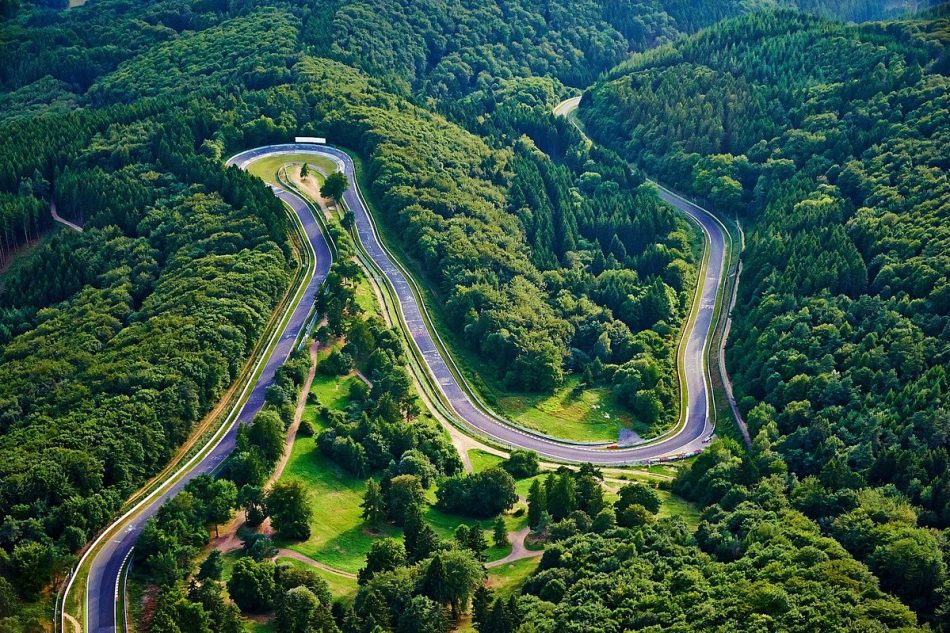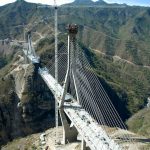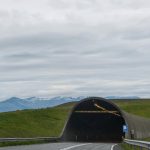The Nordschleife, officially known as the Nürburgring Nordschleife, is a 20.832-kilometer (12.944-mile) lenght automobile racing circuit located in the Eifel mountains near Nürburg in Rhineland-Palatinate, Germany. The Nordschleife is a symbol of German engineering and motorsport excellence. It has been featured in many movies and television shows, and it is considered to be one of the most iconic race tracks in the world.
The Nordschleife is the longest circuit in current use in the world, and one of the most demanding and dangerous. The circuit is a combination of two former circuits: the Old Course, which opened in 1927, and the North Course, which opened in 1937. The Nordschleife is a favorite of racing drivers and enthusiasts for its challenging layout, breathtaking scenery, and unique atmosphere. It has hosted a variety of motorsport events, including the German Grand Prix, the 24 Hours of Nürburgring, and the Adenauer ADAC Rundstrecken-Trophy.
| Nordschleife Length | 20.832 km (12.944 miles) |
| Number of turns | 73 |
| Average speed | 130 km per hour (81 miles per hour) |
| Top speed | 270 km per hour (168 miles per hour) |
| World record lap time | 6 minutes, 11,13 seconds (Loic Duval, Audi R18 E-tron quattro, 2018) |

Piece of track from the Nordschleife circuit
History

Porsche 718 GTR after the accident in the Aremberg curve, Nürburgring, during the 1000 km race, driven by Phil Hill. Hill was probably wired.
The Nordschleife was originally built as a public road in 1927. In 1937, a second circuit, the North Course, was added to the original circuit. The two circuits were combined to form the modern Nordschleife in 1950. The Nordschleife has been modified and updated several times over the years, but it still retains its original character.
The circuit is known for its many sharp turns, elevation changes, and narrow sections. The Nordschleife has been hosting races since 1927, and it has been the scene of some of the most famous and exciting moments in motorsport history. It has also been used for testing and development by many of the world’s leading automakers.
Nürburgring Nordschleife track length & map
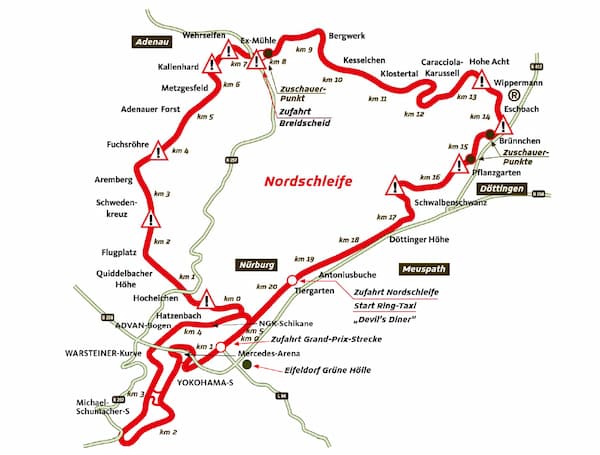
Nordschleife Length
The Nordschleife is the longest permanent race track in the world with approximately 20.832 kilometers (12.944 miles). It’s known for its challenging layout with numerous corners, elevation changes, and long straights, making it one of the most demanding and iconic tracks in the world. It is also one of the most challenging tracks in the world, with 154 corners and an elevation difference of 300 meters (984 feet).
This makes it a demanding test for drivers and cars, and it has earned the nickname “The Green Hell” from many drivers who have raced on it. This extensive distance contributes significantly to the track’s reputation as one of the longest and most challenging racing circuits globally.
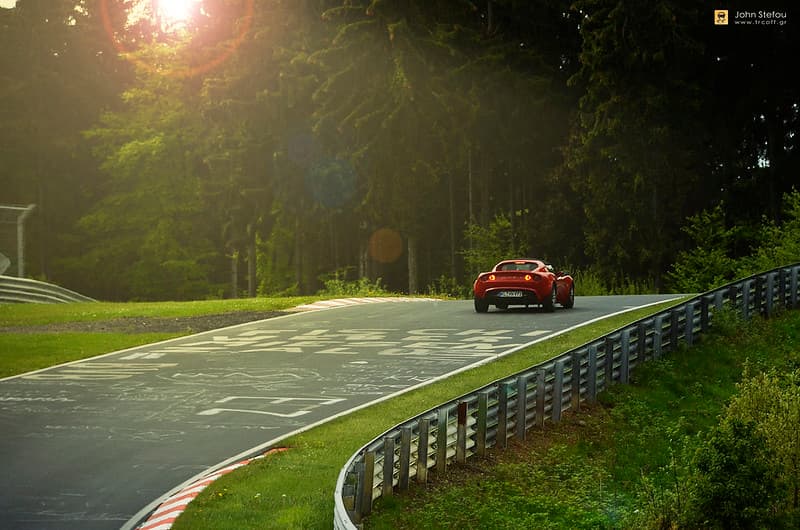
Photo by John Stefou
Layout
- Complexity: The Nordschleife’s layout is incredibly intricate, featuring a blend of over 150 corners, elevation changes, and diverse surface conditions. This complexity presents drivers with a formidable test of skill and endurance, requiring precise execution and unwavering focus throughout the entire lap.
- Variety of Corners: The track boasts a wide variety of corners, ranging from tight hairpins to fast, sweeping bends. Each corner presents its own set of challenges, testing drivers’ ability to adapt their driving techniques and find the optimal racing line.
- Elevation Changes: One of the most distinctive aspects of the Nordschleife is its significant elevation changes. Drivers encounter steep uphill climbs and downhill descents, adding an extra layer of difficulty as they navigate the undulating terrain.
- Technical Sections: Certain sections of the track, such as the iconic Carousel, Flugplatz, and Pflanzgarten, are particularly technical and demanding. Negotiating these sections requires precision, as well as a deep understanding of the track’s nuances.
- High-Speed Straights: Despite its challenging nature, the Nordschleife also features several long straights where drivers can reach impressive speeds. The Döttinger Höhe straight, in particular, allows for exhilarating high-speed runs before diving back into the twisty sections of the track.
- Surface Variation: The track surface of the Nordschleife varies considerably, from smooth asphalt to rougher sections and even sections with cobblestones. This variation adds an element of unpredictability, as drivers must constantly adapt to changing grip levels and surface conditions.
- Historical Significance: Opened in 1927, the Nürburgring Nordschleife has a rich racing history and has hosted numerous iconic events, including Formula One races, endurance races like the 24 Hours of Nürburgring, and various touring car championships. Its challenging layout and legendary status have made it a favorite among drivers and fans alike.
Safety Considerations
Due to its demanding layout and safety concerns, the Nordschleife is subject to strict safety regulations and occasional modifications aimed at improving safety for participants. Despite these measures, the track remains an exhilarating yet unforgiving circuit that demands respect from all who tackle its challenging corners and straights.
Nürburgring Nordschleife records and lap times
The Nürburgring Nordschleife has seen numerous records set across various racing categories and vehicle types. Some notable records include:
Overall Lap Record: As of my last update in January 2022, the overall lap record for the Nürburgring Nordschleife was held by German racing driver Timo Bernhard. He set a blistering lap time of 5 minutes, 19.546 seconds in the Porsche 919 Hybrid Evo on June 29, 2018. This record-breaking lap occurred during the ‘919 Tribute Tour’, celebrating Porsche’s achievements in endurance racing.
Production Car Lap Record: The lap record for a production car around the Nürburgring Nordschleife has seen intense competition among various manufacturers. At the time of my last update, the record was held by the Lamborghini Aventador SVJ, which completed a lap in 6 minutes, 44.97 seconds in July 2018.
Electric Vehicle (EV) Lap Record: Electric vehicles have also made their mark on the Nordschleife, with the NIO EP9 holding the record for the fastest lap by an electric car. It completed the circuit in 6 minutes, 45.90 seconds, setting the record in May 2017.
Front-Wheel Drive (FWD) Car Lap Record: The Honda Civic Type R (FK8) currently holds the record for the fastest front-wheel-drive production car around the Nordschleife. It achieved a lap time of 7 minutes, 43.8 seconds in April 2017.
Motorcycle Lap Record: In the motorcycle category, the lap record for the Nordschleife is held by Peter Hickman, who rode a BMW S1000RR and completed a lap in 6 minutes, 44.97 seconds during the Speedweek event in August 2018.
Touring Car Lap Record: Various touring car championships have also set lap records at the Nürburgring Nordschleife. These records often vary depending on the series and regulations in place.
It’s worth noting that records may change over time as manufacturers and teams continue to develop new technologies and push the limits of performance. Therefore, it’s essential to check for the most up-to-date information regarding Nürburgring Nordschleife records.
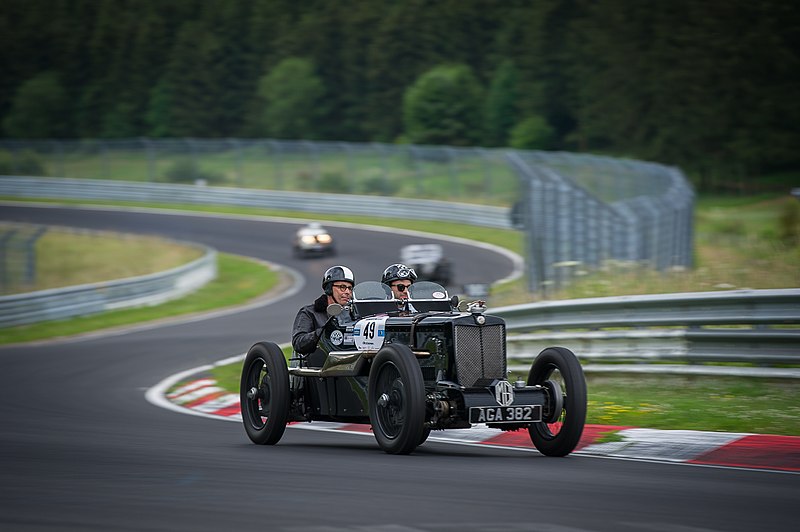
Nürburgring Nordschleife vintage car, wikimedia
Tourist trips
The Nürburgring Nordschleife is open to the public for tourist trips in the evenings and weekends. To use the track, drivers must have a road-legal vehicle that reaches a minimum design speed of 60 km/h and meet noise regulations. The track is not considered a race track, but rather a public traffic area with the status of a toll road.
Drivers must follow the rules of the road, including driving on the right-hand side and not overtaking on the right. There is no general speed limit on the track, but speed limits are in place in some areas for safety reasons. The Döttinger Höhe straight is approximately four lanes wide, but the rest of the track is winding and uneven.
Drivers should be aware that there are often slow vehicles on the track, especially in the steep mountain sections. In order to obtain comparison times for your own laps, the BTG time (Bridge to Gantry) is used to measure the time from the bridge after the tourist driveway to the lattice bridge after the Galgenkopf. However, carrying stopwatches or cameras for recording your own journey is prohibited during tourist trips.
Accidents are not uncommon on the Nürburgring Nordschleife, and tow trucks, fire departments, and even rescue helicopters may be required to respond. The route may remain closed for several hours after an accident. In addition to spectators, there are usually a number of amateur photographers along the route who take photos or film/video record the vehicles passing by.


